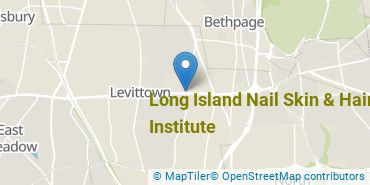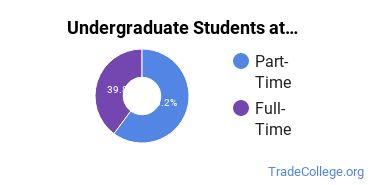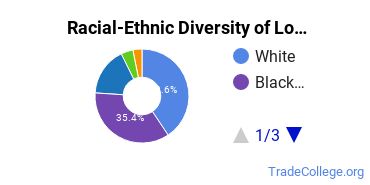Long Island Nail Skin & Hair Institute Trade Programs
Located in Bethpage, New York, Long Island Nail Skin & Hair Institute is a private for-profit institution. Bethpage is a good match for students who enjoy the safety and convenience of the suburbs.
Featured schools near , edit
Where Is Long Island Nail Skin & Hair Institute?

Contact details for Long Island Nail Skin & Hair Institute are given below.
| Contact Details | |
|---|---|
| Address: | 1055 Stewart Avenue, Bethpage, NY 11714 |
| Phone: | 516-520-4800 |
| Website: | www.nailskinhairinstitute.edu |
Can I Afford Long Island Nail Skin & Hair Institute?
Student Loan Debt
Almost 66% of college students who graduated with the class of 2018 took out student loans, but that percentage varies from school to school. At Long Island Nail Skin & Hair Institute, approximately 33% of students took out student loans averaging $4,901 a year. That adds up to $19,604 over four years for those students.
Long Island Nail Skin & Hair Institute Undergraduate Student Diversity

Racial-Ethnic Diversity
The racial-ethnic breakdown of Long Island Nail Skin & Hair Institute students is as follows.

| Race/Ethnicity | Number of Grads |
|---|---|
| Asian | 1 |
| Black or African American | 13 |
| Hispanic or Latino | 13 |
| White | 18 |
| International Students | 0 |
| Other Races/Ethnicities | 0 |
Long Island Nail Skin & Hair Institute Trade School Concentrations
The table below shows the number of awards for each concentration.
| Major | Basic Certificate | TOTAL |
|---|---|---|
| Aesthetician/Esthetician & Skin Care Specialist | 214 | 214 |
| Nail Technician/Specialist & Manicurist | 101 | 101 |
| Hair Styling/Stylist & Hair Design | 0 | 0 |
| TOTAL | 315 | 315 |
References
*The racial-ethnic minorities count is calculated by taking the total number of students and subtracting white students, international students, and students whose race/ethnicity was unknown. This number is then divided by the total number of students at the school to obtain the racial-ethnic minorities percentage.
More about our data sources and methodologies.
Featured Schools
 Request Info
Request Info
|
Southern New Hampshire University You have goals. Southern New Hampshire University can help you get there. Whether you need a bachelor's degree to get into a career or want a master's degree to move up in your current career, SNHU has an online program for you. Find your degree from over 200 online programs. Learn More > |
